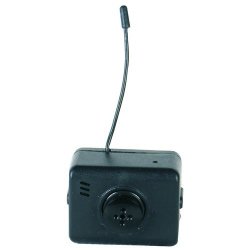 A wireless TV security camera has many uses both around the house and in business. Thanks to modern technological advancements and reduced costs of electronic components anyone can own a wireless TV security camera and can use it just about anywhere.
A wireless TV security camera has many uses both around the house and in business. Thanks to modern technological advancements and reduced costs of electronic components anyone can own a wireless TV security camera and can use it just about anywhere.
There are several variations of wireless TV security cameras, and these days the phrase “wireless TV security camera” may have more than one meaning. Many advertisements, vendors web pages, etc. may describe their product as a wireless TV security camera, when in fact it may not be a true TV type security camera. Usually the meaning of “TV” when used with security cameras and systems refers to the ability of the system to use a television as a monitor or to play back recorded video footage.
Standard wireless security camera systems usually work in tandem with an LCD monitor such as the type of monitor that is commonly used on today’s personal computers. It can be confusing if the phrase is used incorrectly, giving the impression that a wireless “TV” security camera that requires the resolution of a typical LCD personal computer monitor can be used on an average television set.
For the purpose of our discussion in this article, a wireless TV security camera means a wireless security camera that can be used along with a television as either the real-time (live) monitor or for viewing recorded video footage. Also, we’ll briefly describe a typical standard security system setup so that you might better understand the differences of a wireless TV security camera system.
A basic digital video security camera system consists of one or more digital video cameras, a Digital Video Recorder or DVR, and a monitor. Each camera has two different wires running to it. One wire is a small thin wire carrying the low voltage Direct Current (DC) from a power distribution center or a plug-in transformer. If a power distribution center is used than each camera will have a line run out to it from the location of the power distribution box. In addition, each camera will require a larger RG-59 coaxial video transmission cable run from it to the DVR.
The digital video camera uses an electronic sensor chip to convert light waves into electrical energy that can be used to create a video image. The information (video data) that is created by the camera is sent to the DVR for processing by way of the coaxial video transmission cable. Most DVRs include a processor that uses a special compression program to reduce the size of the incredibly large digital video file. This has two advantages: 1) By making the video file smaller it allows for more footage, i.e. longer amounts of time, to be stored on the DVR; and, 2) The smaller file is easier for the processor and DVR to handle.
After the processor has compressed the video data and created a digital video file, the file is stored on the DVR. It may also be viewed instantly (live) on a video monitor. Most monitors used today have resolutions much higher than that of a standard cathode ray tube (CRT) television. However, it is true that as time progresses, our televisions are becoming more and more like computer monitors with high definition increased resolution.
A wireless TV security camera works much the same way with a couple of exceptions. First, the wireless TV security camera does not require the coaxial video transmission cable. The camera has an on-board transmitter and antenna and it broadcasts its video signals via radio waves to either a corresponding receiver or combination receiver DVR. Wireless cameras use all sorts of technology to send their signals but the 2.4 and 5.8 GHz band radio technology like that used in home wireless phones is probably the most common.
The second exception for wireless TV security cameras is that the camera’s video picture may be viewed on an average television set. This can be done because the camera either records in a format that is compatible with a television set or the receiver/receiver DVR combo displays the video footage in a format that is compatible with a standard television set.
There are several uses for wireless TV security cameras where viewing the camera’s images on television would be convenient. Just a few examples of these applications include using them as baby monitors, elderly care monitoring, and many other uses around the home as well as the business.
